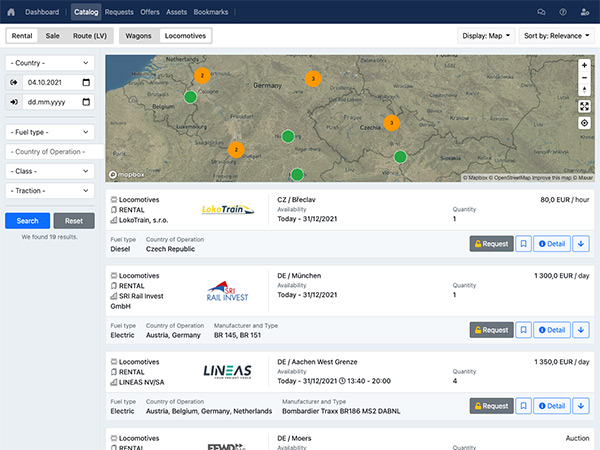In the first part of the interview with Gabriele Tricarico, CEO of RFMA, you can read, among other things, about the benefits of a mobile workshop for rail freight. Here is the second part:
RM: Where do you see space to expand your activities: is it still just Italy or are you also planning international expansion?
We still see a lot of space for improvement in Italy, so we are not planning any international expansion. For the time being... However, we can confirm that we are able to intervene in border areas and "just beyond"; this has happened on more than one occasion in order to meet specific customer requirements.
However, Italy remains the main focus of our activities: it is a country that is crossed by several rail freight corridors of some importance at European level. These corridors link Italy with France and Eastern European countries on the east-west axis and with Central and Northern European countries on the north-south axis.
Within these corridors, the rail modal share (the ratio between the volume of goods transported by rail and the total volume of goods transported) also reaches very high percentages in Italy, mainly thanks to the presence of strategic infrastructures such as ports and freight villages.
RM: Does the digitalisation of the railways help you in your activities and if so, how?
We often hear about the digitalisation process and how this, together with infrastructure development, will increase the supply and regularity of European rail transport.
We believe that digital innovation is useful to promote modal shift from road to rail and intermodality, in order to increase and improve the performance of both passenger services and freight logistics, both on existing lines and on the infrastructure that will soon be built.
In this sense, companies like ours could also benefit from a greater presence of freight trains, which may require maintenance.
RM: Where do you see the maintenance segment in 10 years' time?
I hope that we will soon be able to return to the levels of the pre-COVID period, a period in which rail freight saw a significant increase, also due to the sustainability of this mode of transport.
Certainly, first the COVID pandemic and then the Russian-Ukrainian conflict had a negative impact on the whole sector. Unfortunately, recent years have taught us that it is no longer possible to make long-term forecasts.
However, we believe that the railways have a key role to play in increasing the efficiency and sustainability of European transport, in line with the objectives of the EU strategy for sustainable and intelligent mobility.
To this end, the maintenance sector could be greatly improved, but to increase the share of rail transport it is necessary to improve access to rail infrastructure, especially for international freight. It is important to involve all stakeholders in this process, especially the main ones such as CMEs, railway undertakings, infrastructure managers and logistics operators.
Certainly, the future will also bring technological innovations that could certainly benefit the maintenance segment.
However, it is important to focus on the present, convinced that if we do our best today, we will certainly do our best tomorrow!

